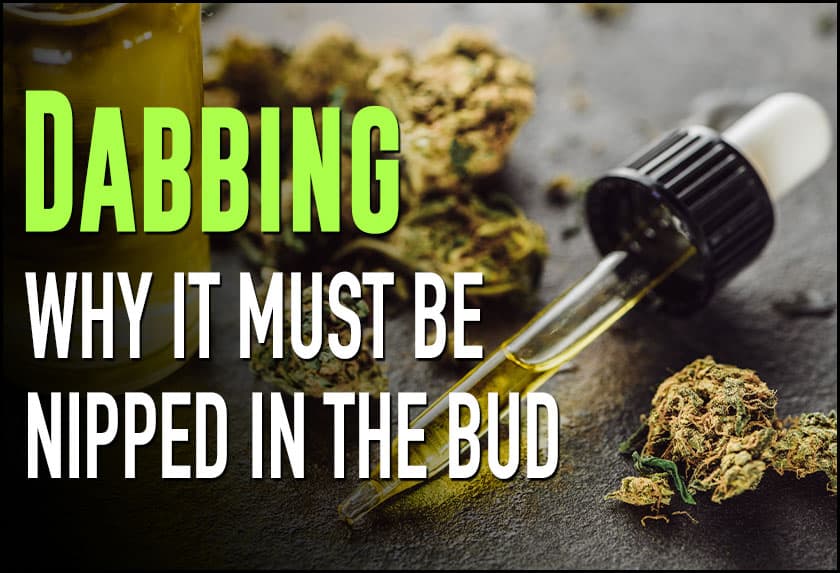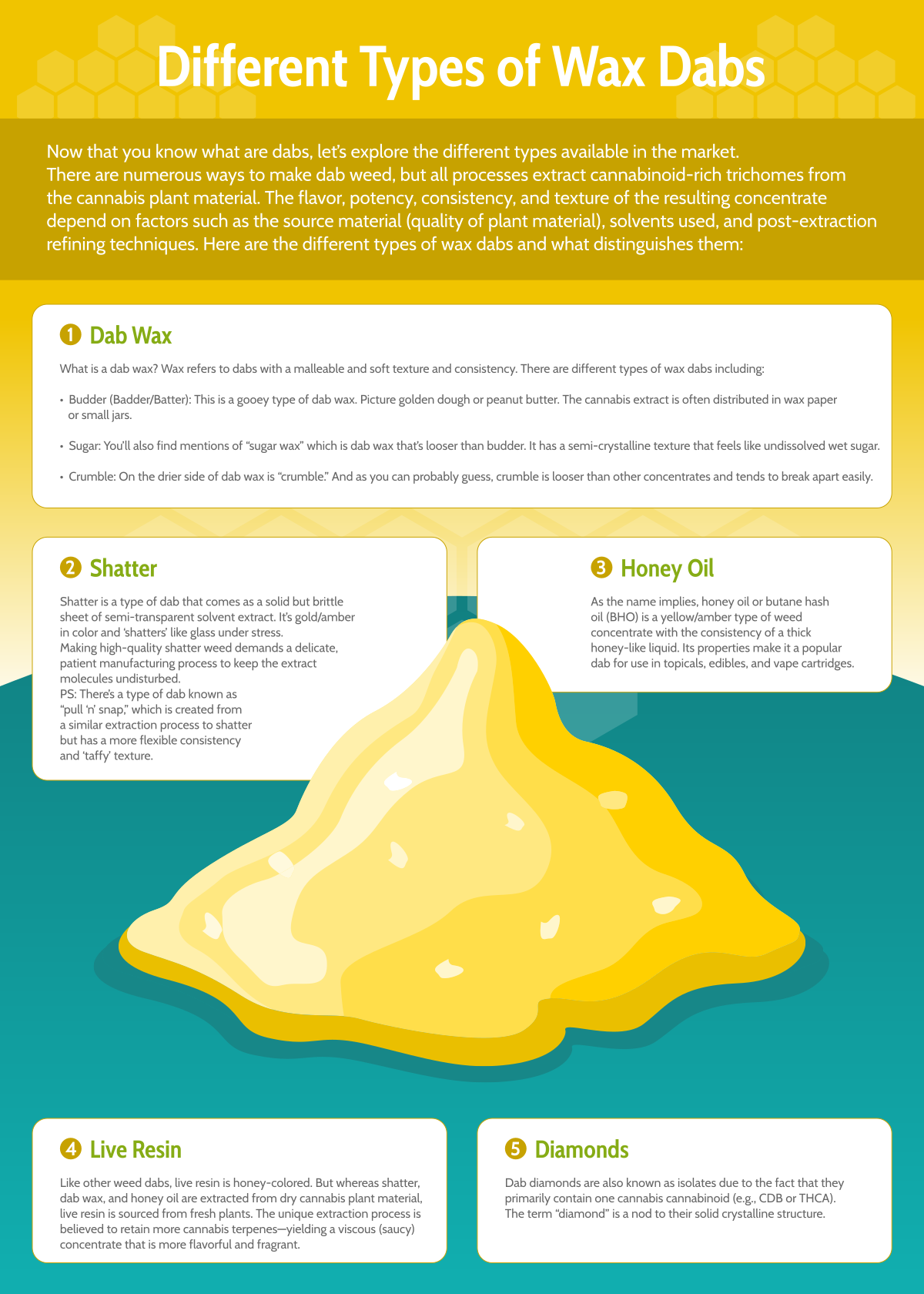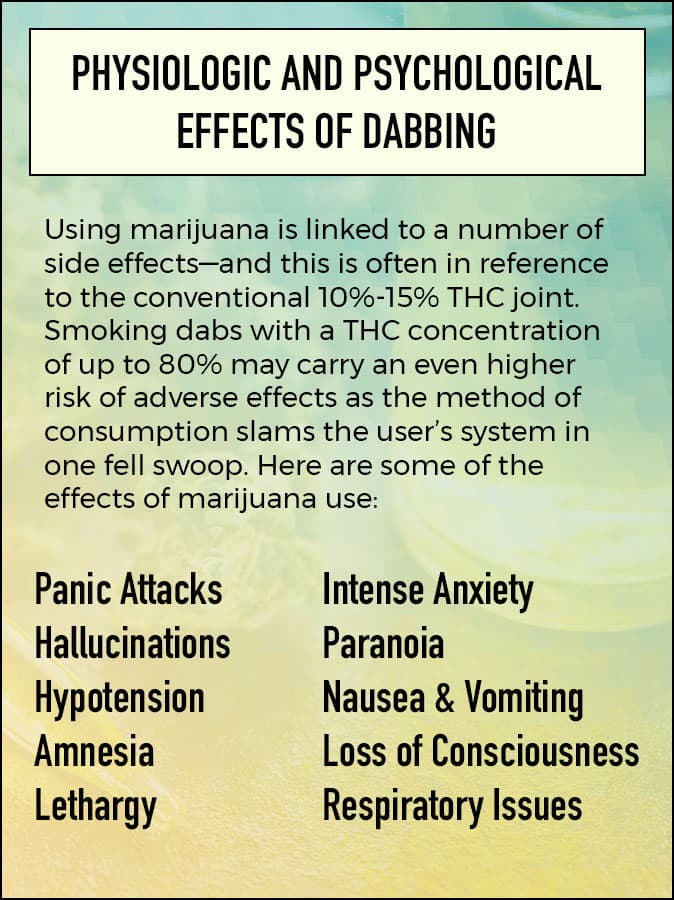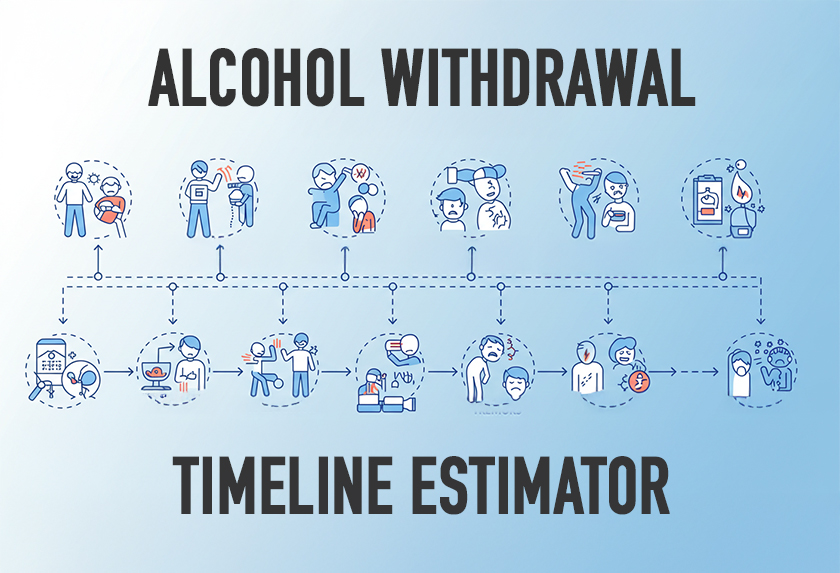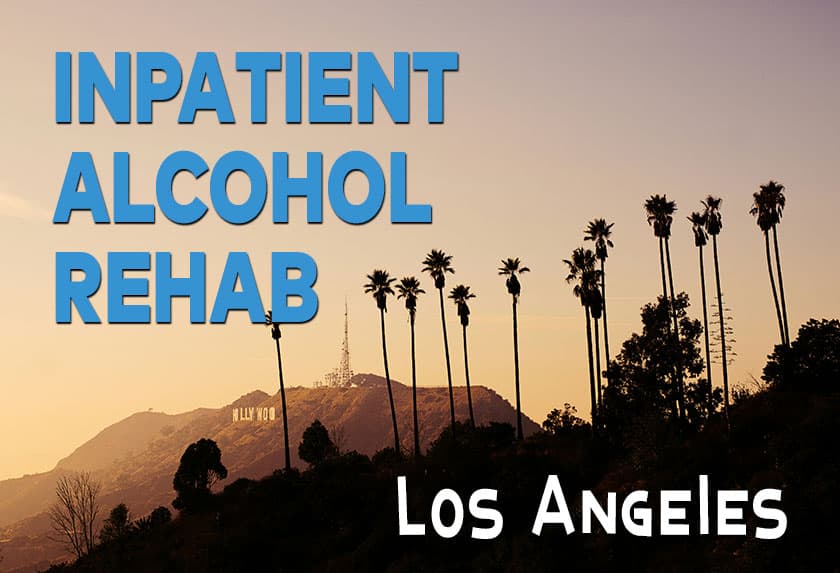Heard of dabbing? And no, we’re not referring to the dance move that was once a viral trend. The “dabbing” we’ll be talking about in this post is a less playful and significantly more dangerous practice involving the consumption of marijuana concentrates.
According to researchers, the legalization of marijuana in many U.S. states may have paved the way for experimentation and risky cannabis use behaviors such as smoking dabs. Dabbing is an emerging trend that is especially popular among teenagers and young adults—a population that happens to be more susceptible to the adverse effects of weed, including a higher risk of developing marijuana use disorder.
With this in mind, this article covers everything you need to know about the dangerous trend—from what is a dab (weed) to the different types of wax dabs, why smoking dabs is a bad idea, and how to get help if you or a loved one experiences its adverse effects.
What is a Dab (Weed)?
Marijuana is usually consumed via smoking (blunts, joints, pipes) or edibles. But the landscape is continually shifting courtesy of mass legalization and a ‘softening’ of public skepticism towards the once vilified drug.
As the stigma attached to cannabis fades, manufacturers and drug users appear to be increasingly experimenting with different extraction techniques and delivery methods without fear of legal repercussions. One such ‘innovative’ extraction process is the making of dab wax.
So, what are dabs?
Dabs—also referred to as budder, wax, honeycomb, shatter, butane hash oil, or black glass—are potent cannabis concentrates containing high levels of tetrahydrocannabinol (THC), the main psychoactive (high-inducing) chemical in marijuana. There are different types of wax dabs, with some having THC concentrations of up to 80%. To give you a picture of the potency of dab weed, the concentration of THC in conventional joints typically ranges from 10% to 15%.
If smoking a joint is the equivalent of a beer, a dab would be a shot of vodka in terms of ABV (Alcohol by Volume). Or for a more evocative reference, a dab is to cannabis what crack is to cocaine. Fittingly, some sources refer to weed dabs as ‘pot on steroids’.
Now, you’re probably wondering what are dabs made of and how they have such high concentrations of THC. Here’s why:
What are Dabs Made of?
Similar to a typical joint, dabs are made of marijuana plant matter. But the final products look nothing alike. While joints or blunts are simply ground flowers rolled in a wrap, dabs look like amber-colored processed oils and resins. So, what gives?
The difference between dabs and conventional weed is the use of chemical solvents like butane to extract the essential oils in the plant. The extraction process eliminates plant material to create a concentrated extract containing resin from trichomes. (PS: Trichomes are glands on the cannabis plant that contain terpenes and cannabinoids like THC).
The extract can have different textures and consistencies depending on the details of the extraction process (more on this later).
Dabbing Meaning
What is dabbing? The term “dabbing” basically refers to the act of consuming dab weed. It involves heating cannabis concentrates (dab wax) with a blow torch and inhaling the vapors—often through a glass bong widely known as an “oil rig.”
The delivery method means the effects of marijuana are felt almost immediately. And because the THC concentration of dabs is more than 4X the level in cannabis flower buds, the “high” and side effects associated with weed are dialed up.
Is Dabbing Illegal?
Well, it depends. The issue of cannabis legality is often a tricky topic. Marijuana laws differ at the state and federal levels—and from one state to the next. This makes it difficult to give a generalized answer for whether dabbing is legal. For this reason, it’s highly advisable to consult a legal professional to avoid violating state and federal cannabis laws.
Different Types of Wax Dabs
Now that you know what are dabs, let’s explore the different types available in the market. There are numerous ways to make dab weed, but all processes extract cannabinoid-rich trichomes from the cannabis plant material.
The flavor, potency, consistency, and texture of the resulting concentrate depend on factors such as the source material (quality of plant material), solvents used, and post-extraction refining techniques. Here are the different types of wax dabs and what distinguishes them:
-
Dab Wax
What is a dab wax? Wax refers to dabs with a malleable and soft texture and consistency. There are different types of wax dabs including:
- Budder (Badder/Batter): This is a gooey type of dab wax. Picture golden dough or peanut butter. The cannabis extract is often distributed in wax paper or small jars.
- Sugar: You’ll also find mentions of “sugar wax” which is dab wax that’s looser than budder. It has a semi-crystalline texture that feels like undissolved wet sugar.
- Crumble: On the drier side of dab wax is “crumble.” And as you can probably guess, crumble is looser than other concentrates and tends to break apart easily.
-
Shatter
Shatter is a type of dab that comes as a solid but brittle sheet of semi-transparent solvent extract. It’s gold/amber in color and ‘shatters’ like glass under stress. Making high-quality shatter weed demands a delicate, patient manufacturing process to keep the extract molecules undisturbed.
PS: There’s a type of dab known as “pull ‘n’ snap,” which is created from a similar extraction process to shatter but has a more flexible consistency and ‘taffy’ texture.
-
Honey Oil
As the name implies, honey oil or butane hash oil (BHO) is a yellow/amber type of weed concentrate with the consistency of a thick honey-like liquid. Its properties make it a popular dab for use in topicals, edibles, and vape cartridges.
-
Live Resin
Like other weed dabs, live resin is honey-colored. But whereas shatter, dab wax, and honey oil are extracted from dry cannabis plant material, live resin is sourced from fresh plants. The unique extraction process is believed to retain more cannabis terpenes—yielding a viscous (saucy) concentrate that is more flavorful and fragrant.
-
Diamonds
Dab diamonds are also known as isolates due to the fact that they primarily contain one cannabis cannabinoid (e.g., CDB or THCA). The term “diamond” is a nod to their solid crystalline structure.
How Does Dabbing Work?
The potent high-inducing THC content in dab weed is only activated by the introduction of heat—a process known as decarboxylation or “decarbing.” The heating process changes the molecular structure of the cannabinoid acids, which allows the drug to interact with the user’s endocannabinoid system (ECS)—a network of cannabinoid receptors found in the nervous system and throughout the body.
For this reason, smoking remains the most popular way of consuming weed dabs. This is generally done using either a vaporizer or a dab rig.
What is a Dab Rig and How Does it Work?
A dab rig (also known as an “oil rig”) is a specialized water pipe that resembles a bong. It features a chamber for holding water, a mouthpiece, and a “nail” that holds the cannabis concentrate. The nail is often made of materials that can withstand the high temperatures needed to vaporize dabs such as quartz, titanium, or glass.
The nail is first subjected to extreme heat (usually with a blowtorch) before a dab is placed on it and covered with a cap. The dabber inhales the vapor as it travels from the nail, through the main water chamber (where it’s cooled before hitting the inhaler’s lungs), and into the mouthpiece.
How Do Dab Pens Work?
While dab rigs are easy to spot, hand-help vape pens are not. Battery-powered vaporizers known as “dab pens” or e-cigs are smokeless and sometimes odorless, which makes them popular among teenagers and young adults looking to conceal their risky dabbing behavior. Dab pens contain an atomizing chamber that heats and vaporizes dab weed for an instant high.
Dangers of Smoking Dabs
There’s a long-held view among cannabis supporters that weed is a safe, natural compound with little-to-no adverse effects. But this couldn’t be further from the truth. Even though marijuana is considered safer and more socially acceptable than most recreational drugs, it’s still harmful to the user and their loved ones.
Smoking dabs carries significant health risks that must not be ignored! These include:
Physiologic and Psychological Effects of Dabbing
Using marijuana is linked to a number of side effects—and this is often in reference to the conventional 10%-15% THC joint. Smoking dabs with a THC concentration of up to 80% may carry an even higher risk of adverse effects as the method of consumption slams the user’s system in one fell swoop. Here are some of the effects of marijuana use:
- Panic attacks
- Intense anxiety
- Hallucinations
- Paranoia
- Hypotension (increased heart rate and blood pressure)
- Nausea and vomiting
- Antegrade amnesia
- Loss of consciousness
- Lethargy
- Respiratory issues from smoking dabs
Of particular concern is the negative effects of marijuana use on the brain development of teenagers. The drug directly affects parts of the brain responsible for attention, decision-making, memory, learning, coordination, and reaction time.
Frequent or long-term marijuana use (including smoking dabs) has been linked with a heightened risk of psychosis and schizophrenia. In one case appearing in the journal Missouri Medicine, an anti-recreational marijuana activist claims that her son committed suicide after becoming psychotic from dabbing.
Marijuana has also been linked to an increased risk of indulging in harder illicit drugs like heroin—making it a potential gateway drug.
Contaminants
A common argument for dabbing is that it’s cleaner and easier on the lungs than smoking marijuana—which released hot smoke, resin, and other harmful compounds (similar to cigarettes). But is dabbing safer than making weed? Well, not really.
While vapor from dabbing is technically safer for your lungs than smoke, the risks are still there. Dabbing exposes dab wax to extremely high temperatures, which increases the risk of exposure to harmful chemicals like benzene and methacrolein.
Most marijuana concentrates also tend to be contaminated with residual solvents and toxic substances like pesticides—not to mention the health risk from the use of poorly maintained dabbing equipment.
Fire Hazards
Making homemade butane hash oil is an incredibly risky process. Making dabs is an explosive process that involves blasting butane (i.e., highly flammable lighter fluid) through marijuana plant material.
And even after the extremely dangerous process, any remaining butane often lingers in the air—posing the risk of a violent explosion when ignited by the smallest spark. There have been reports of buildings going ablaze and people suffering fatal burn injuries following a dabbing production process gone wrong.
Even the act of dabbing (i.e., vaporizing a dab under extremely high temperatures) carries a risk of starting a hazardous fire.
Dab Weed Addiction
Is marijuana addictive? Yes, it is! Despite the common misconception that weed is not addictive, the National Institute on Drug Abuse (NIDA) notes that around 30% of marijuana users develop a form of addiction. The risk of marijuana dependency is up to 7X higher among people who use the drug before the age of 18.
And due to the high THC concentrations of dabs, the risk of tolerance and dependence may be higher from this method of consumption. This is because dabbing floods your system and saturates cannabinoid receptors—making it more difficult to achieve a similar high with your next intake.
Some signs of marijuana use disorder include:
- Craving pot
- Unsuccessful attempts to quit or reduce cannabis use
- Smoking dabs in high-risk situations
- Continuing to use weed despite the negative consequences
- Spending a considerable amount of time dabbing, thinking about dabs, or recovering from intoxication
- Taking larger dabs than intended
- Experiencing withdrawal symptoms like restlessness, irritability, anxiety, fatigue, changes in appetite, shaking, and sweating
Thankfully, marijuana use disorder is treatable. Effective treatment often starts with marijuana detox followed by holistic rehab processes and recovery support.
Takeaway – Dabbing, a ‘Weed’ that Needs to be Uprooted
The bottom line is that dabbing is dangerous! Smoking dabs carries significant health and safety risks. One way to mitigate these risks is by raising awareness of the dangers of dabbing and discouraging the abuse of marijuana, especially among young people who are more susceptible to the harmful effects of cannabis. We need to snip dabbing in the bud by educating our kids and loved ones!
If you suspect addiction to dabbing, it’s important to seek a professional evaluation and treatment. Reaching out for help is the first step to a healthier, happier, and more productive life free from the shackles of marijuana addiction.
